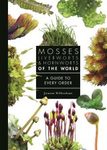![The Crossley ID Guide: Eastern Birds The Crossley ID Guide: Eastern Birds]()
Click to have a closer look
About this book
Contents
Customer reviews
Biography
Related titles
About this book
Unlike other guides, which provide isolated individual photographs or illustrations, this book features large, lifelike scenes for each species. These scenes - 680 in all - are each composed of 12-20 color images showing the bird in a wide range of views, both near and far, from different angles, in various plumages and behaviors, including flight, and in the habitat in which they live.
These compositions show how a bird's appearance changes with distance, and give equal emphasis to characteristics experts use to identify birds: size, structure and shape, behavior, probability and color. These images are reinforced with concise text and provide a wealth of detailed visual information that invites and rewards careful study. However, the most important identification features can be grasped instantly by anyone, whether a beginner, expert, or anywhere in between.
Contents
Preface 5 Quick Key to Species 6 Introduction 22 How to Use This Book 22 How to Be a Better Birder 25 Species Accounts Waterbirds 36 Swimming Waterbirds 36 Flying Waterbirds 98 Walking Waterbirds 144 Landbirds Upland Gamebirds 219 Raptors 231 Miscellaneous Larger Landbirds 269 Aerial Landbirds 315 Songbirds 332 Acknowledgments 517 Index 518 Shorthand (Alpha Codes) 518 Scientific Names 522 Common Names 526
Customer Reviews
Biography
Richard Crossley is an internationally acclaimed birder and photographer who has been birding since age 7 and who, by age 21, had hitchhiked more than 100,000 miles chasing birds across his native Britain and Europe. His love of the outdoors and his interest in teaching, design, and technology have shaped his unique vision for the future of birding and bird books. He is excited by the prospect of using new technologies to bring "reality birding" to a wide audience through many different media. He is a spokesperson for Nikon Sports Optics and coauthor of "The Shorebird Guide", and lives with his wife and two daughters in Cape May, New Jersey.
Field / Identification Guide
By: Richard Crossley
528 pages, 680 colour illustrations, maps
"[...] The author said in the introduction "a picture says 1000 words", promoting the quick mental snapshot of an image versus reading and memorizing information. However, quickly interpreting a picture or a view of a bird in the field comes with experience - and frustration. The newer birder often does not know what in the photo may demand extra attention; what things must be compared; how to read relative sizes and shapes; etc. The beginner won't have the experiential knowledge needed to free him from the text and to rely on only the photos. Having just said that, any birder will still greatly enjoy this book so long as he knows what is and is not in this book."
- Avian Review, 16-02-2011
"[...] The amount of work that went into The Crossley ID Guide: Eastern Birds is staggering. It contains 640 scenes, composed from more than 10,000 photographs (nearly all taken by Crossley himself!), that present the birds of eastern North America in a unique and lifelike manner. I don’t know if it will revolutionize field guides; probably not, though, if for no other reason than I don’t know if anyone other than Crossley could produce a guide like this (I’m only half joking). Still, the Crossley guide has become my go-to source for learning birds, and it is simply a pleasure to browse through. I highly recommend it."
- Grant McCreary (18-08-2011, read the full review at The Birder's Library








































